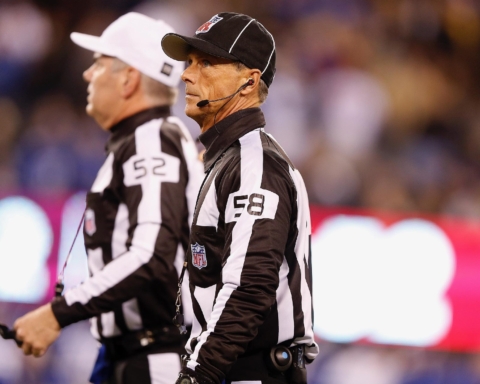By Samantha Berkhead
Managing Editor
In the immediate aftermath of the horrific massacre at Sandy Hook Elementary School last month, Hollywood executives suspended the premieres of several releases containing violent content, including “Jack Reacher” and “Django Unchained.” Despite this, an argument prevails among many Americans about these types of films — that their violent content is the catalyst to mass shootings like Sandy Hook and Columbine. It’s an argument steeped in ignorance of the actual facts.
While it’s true that violence in the movies isn’t exactly beneficial to us, it’s entirely wrong to say that it’s the direct cause of mass shootings.
In July, a movie theater shooting during a midnight screening of “The Dark Knight Rises” in Aurora, Colo. that killed 12 and injured 58 highlighted the effects of violent films on a society.
Perhaps most disturbing was the fact that the shooter, James E. Holmes, emulated Batman villain The Joker when carrying out his crime, according to CNN’s coverage of the event. In that case, the shooter very clearly had some sort of mental illness augmented by his false perception that villains like The Joker bring a beneficial anarchy to society.
And even then, what other instances of violence has Christopher Nolan’s Batman trilogy incited? None that I’ve heard of. The common citizen certainly doesn’t descend into bloodlust the minute they see a man in grotesque clown makeup creating chaos and destruction on a whim.
In the aftermath of Sandy Hook, many used Quentin Tarantino’s “Django Unchained” as a scapegoat for the supposedly inevitable influence that films of its kind have on impressionable minds.
Tarantino himself, who boasts a 20-year repertoire of fleshing out his films with gore, guts and gruesomeness, is notorious for his vehemence in denying their influence on violent acts.
“I’m really annoyed. I think it’s disrespectful to their memory…of the people who died to talk about movies,” Tarantino said in a Jan. 3 interview with Empire magazine.
The violence in Tarantino’s films is not propaganda. It doesn’t encourage the audience to act in a similar manner to the characters.
In fact, the only character who doesn’t fall victim to a miserable fate in his 1994 film “Pulp Fiction” is Samuel L. Jackson’s Jules, who renounces his job as a hit-man to follow the path God chooses for him. That doesn’t sound like an endorsement of violence to me.
Instead, the method of Tarantino’s madness is the flourish, the panache that a smattering of brains across the movie screen brings. He treats his violence like an artist treats his paintbrushes. When you watch Eli Roth’s “Bear Jew” smash a Nazi officer’s head in with a baseball bat in “Inglourious Basterds,” it’s merely the work of a man who lives to entertain.
It’s understandable to want to avoid viewing scenes of gratuitous death and gore, but blaming them for the horrific actions of a severe minority of people seems a bit much. Movies are meant to tell stories, and not all stories are happy and nice.
Ultimately, it’s the responsibility of the viewer to know the difference between right and wrong. Filmmakers should be able to express their artistic license freely without fear of censorship and condemnation. Isn’t that what America is about anyway?





